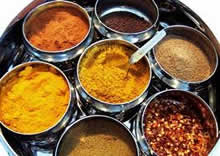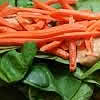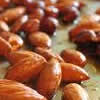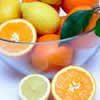Nuts are nature's way of showing us that good things come in small packages. These bite-size nutritional powerhouses are packed with heart-healthy fats, protein, vitamins, and minerals.
Here's a look at the pros and cons of different nuts, as well as the best and worst products on supermarket shelves today. Of course, you can get too much of these good things: Nuts are high in fat and calories, so while a handful can hold you over until dinner, a few more handfuls can ruin your appetite altogether. And although nuts are a healthy choice by themselves, they'll quickly become detrimental to any diet when paired with sugary or salty toppings or mixes.
Best nuts for your diet:Â Almonds, Cashews, Pistachios
All nuts are about equal in terms of calories per ounce, and in moderation, are all healthy additions to any diet. "Their mix of omega-3 fatty acids, protein, and fiber will help you feel full and suppress your appetite," says Judy Caplan, RD, a spokesperson for the Academy of Nutrition and Dietetics.
The lowest-calorie nuts at 160 per ounce are almonds (23 nuts; 6 grams protein, 14 grams fat); cashews (16 to 18 nuts; 5 grams protein, 13 grams fat); and pistachios (49 nuts; 6 grams protein, 13 grams fat). Avoid nuts packaged or roasted in oil; instead, eat them raw or dry roasted, says Caplan. (Roasted nuts may have been heated in hydrogenated or omega-6 unhealthy fats, she adds, or to high temperatures that can destroy their nutrients.)
Worst nuts for your diet:Â Macadamia Nuts, Pecans
Ounce for ounce, macadamia nuts (10 to 12 nuts; 2 grams protein, 21 grams fat) and pecans (18 to 20 halves; 3 grams protein, 20 grams fat) have the most calories— â€" 200 each— â€" along with the lowest amounts of protein and the highest amounts of fats.
However, they're still good nuts: The difference between these and the lowest calorie nuts is only 40 calories an ounce. As long as you're practicing proper portion control and not downing handfuls at a time, says Caplan, any kind of raw, plain nut will give you a good dose of healthy fats and nutrients.
Best nuts for your heart:Â Walnuts
While all nuts contain heart-healthy omega-3 fats, walnuts (14 halves contain 185 calories, 18 grams fat, 4 grams protein) have high amounts of alpha linoleic acid (ALA). Research has suggested that ALA may help heart arrhythmias, and a 2006 Spanish study suggested that walnuts were as effective as olive oil at reducing inflammation and oxidation in the arteries after eating a fatty meal. The authors of this study, funded in part by the California Walnut Commission, recommended eating around eight walnuts a day to achieve similar benefits.
Best nuts for your brain:Â Peanuts
Technically legumes but generally referred to as nuts, peanuts are high in folate—a mineral essential for brain development that may protect against cognitive decline. (It also makes peanuts a great choice for vegetarians, who can come up short on folate, and pregnant women, who need folate to protect their unborn babies from birth defects, says Caplan.) Like most other nuts, peanuts are also full of brain-boosting healthy fats and vitamin E, as well. One ounce of peanuts (about 28 unshelled nuts) contains about 170 calories, 7 grams protein, and 14 grams fat.
Best nuts for men:Â Brazil Nuts, Pecans
Creamy Brazil nuts are packed with selenium, a mineral that may protect against prostate cancer and other diseases. Just one nut contains more than a day's worth, so eat these sparingly: Recent research has hinted that too much selenium may be linked to type 2 diabetes risk. One ounce of Brazil nuts (6 nuts) contains about 190 calories, 19 grams fat, and 4 grams protein.
Pecans are also good for men's health: They're loaded with beta-sitosterol, a plant steroid that may help relieve symptoms of benign prostatic hyperplasia (BPH), or enlarged prostate. One ounce of pecans (18 to 20 halves) contains about 200 calories, 21 grams fat, and 3 grams protein.
Best nuts for disease prevention:Â Almonds
Relatively low in calories, almonds have more calcium than any other nut, making them a great food for overall health. Plus, they are rich in fiber and vitamin E, an antioxidant that helps fight dangerous inflammation and possibly health conditions such as lung cancer and age-related cognitive decline.
Because they're so versatile, almonds are often a favorite among nut eaters: You can buy them raw, toasted, slivered, or coated with a variety of fun flavors, from Wasabi & Soy Sauce to Lime 'n Chili.
Best snack packaging for nuts:Â Choose 100- to 200-calorie packs
Because nuts are so high in calories (and so tasty, to boot!), it's important to practice portion control when eating them as a snack. We love Blue Diamond Almonds 100-calorie snack packs, available in six flavors, including Cinnamon Brown Sugar and Dark Chocolate. Want more variety? Pick up Planters Nutrition Wholesome Nut Mix on-the-go packs, each containing a 200-calorie mix of cashews, almonds, and macadamia nuts.
Worst snack packaging for nuts:Â Avoid anything in a tub
We're all for buying in bulk to save money and packaging, but it's important not to snack straight from the box (or in this case, the giant tub) when a craving hits. Beer Nuts' "original" formula— â€" peanuts coated with a sweet and salty glaze â€" —aren't a bad choice themselves (170 calories, 14 grams fat, and 2 grams sugar per ounce), but if you're munching on them at a party or during a "long day of game watching," as the company's website suggests, you'll likely be eating more than the recommended serving size.
Not to mention, the Party Mix variety also includes M&Ms and sugary yogurt-covered raisins, for an extra calorie boost. A better bet is Beer Nuts' Original Teaser Peanut Sized bags, each containing just half an ounce of nuts.
Best nuts for chocolate lovers: Go for cocoa-dusted almonds
Rather than hiding your nuts under a thick layer of sugary chocolate candy— â€" think Jordan almonds or peanut M&Ms— â€" keep it simple with Emerald's Cocoa Roast Almonds. These nuts are lightly dusted with cocoa powder and sweetened with Sucralose, and have 150 calories, 13 grams fat, and 1 gram of sugar per ounce.
We'd give you a "worst" nuts for chocolate lovers, but the possibilities are practically endless. Just think of it this way, says Caplan: Anything that's more chocolate than nut really should be considered candy â€" —not as a way to get your daily quota of healthy fats.
Best nuts for your sweet tooth: Try all-natural glazed nuts
Want something sweet and satisfying but without the extra calories and high-fructose corn syrup? Look no further than Sahale Snacks glazed nuts, in flavors like Almonds with Cranberries, Honey, and Sea Salt (160 calories, 11 grams fat, 5 grams protein per ounce) or Cashews with Pomegranate and Vanilla (150 calories, 10 grams fat, 4 grams protein per ounce). They're sweetened with organic cane juice and tapioca syrup, and each contains only 6 grams of sugar per ounce. Just be careful not to eat the whole bag!
Worst nuts for your sweet tooth:Â Check labels for sugar content
Just because something has nuts in it doesn't make it good for you, says Caplan: "Don't justify eating a Snickers because it's got peanuts in it." Anything coated with or tucked inside layers of sugar, toffee, chocolate, or ice cream isn't going to give you much nutritional benefit, and the calories can quickly add up, she says.
It's not just candy, though: Beware of seemingly healthful varieties, like Planters Sweet 'N Crunchy Peanuts. Although they still have just 140 calories and 8 grams fat per ounce, the second and third ingredients after peanuts are sugar and butter. In fact, one ounce contains 13 grams of sugar (in just a 28-gram serving size). Considering peanuts only have about 2 grams of sugar naturally, that's 11 grams of added sugar in just one handful, out of a recommended 25 for the whole day!
Best nuts for a salt craving:Â Look for 'lightly salted'
If you don't have high blood pressure or haven't been warned away from salt by your doctor for other reasons, a handful or two of salted nuts a day won't hurt you, says Caplan, who has a private nutrition practice in Vienna, Va.
Nuts are, of course, available unsalted. But to satisfy a salty craving without going overboard, look for in-between varieties like Planters Lightly Salted peanuts, almonds, and cashews (45-55 mg sodium), or Wonderful Pistachios Lightly Salted (80 mg). Check ingredient labels, too: Some brands, like Back to Nature Salted Almonds (75 mg sodium), contain less salt than others.
Worst nuts for a salt craving:Â Steer clear of BBQ or boiled nuts
If you're watching your sodium intake, watch out for hot and spicy or barbecue flavors too. Kar's Nuts Blazin' Hot Peanuts, for example, contain 370 mg of sodium per ounce (along with 160 calories and 14 grams fat)—a whopping 15 percent of your daily recommended value, in just one handful!
Beware boiled peanuts, as well: This Southern treat is made by soaking fresh, raw peanuts, in their shells, in a salty brine. Sodium amounts will vary based on the exact preparation, but Margaret Holmes Peanut Patch boiled peanuts, for example, contain 390 mg per ounce.
Best trail mix:Â Raw nuts, seeds, and dried fruit
Trail mix is available in countless varieties and from countless brands. "Look for trail mix with raw nuts," suggests Caplan. "Or if the nuts are roasted, look for the words 'dry roasted' rather than 'oil roasted.'"
Nuts pair great with fruit, seeds, and perhaps even a little dark chocolate, Caplan adds; just pay attention to the calorie count and serving size. We love Eden Foods' "All Mixed Up" blend (160 calories, 12 grams fat, 8 grams protein per ounce) of organic almonds, pumpkin seeds, and dried tart cherries. If you're more of a granola guy or gal, treat yourself to a quarter cup of Bear Naked's Banana Nut mix (140 calories, 7 grams fat, 3 grams protein) with almonds and walnuts.
Worst trail mix:Â Save high-calorie mixes for the trail
High-calorie trail mix is fine when you've got a long hike ahead of you, but too often we eat these store-bought blends while sitting at our desks or driving in our cars. Don't make that mistake with Planter's Energy Go-Packs, a 1.5-ounce mix of nuts, semisweet chocolate, oil roasted soynuts, and sesame seeds: With 250 calories and 20 grams of fat a pop, they fall slightly above our healthy snacking guidelines.
Also check labels for sky-high sugar contents: Some trail mixes— â€" especially those with raisins, dried cranberries, and/or candy-covered chocolate pieces— â€" can contain up to 18 grams of sugar per serving.
Best nut butter:Â Keep ingredients simple
When choosing a nut butter, look for spreads with the fewest ingredients possible: Just nuts (and salt, if you want). Arrowhead Mills Organic Peanut Butter, for example, contains 100 percent dry-roasted peanuts, and has 190 calories, 17 grams fat, and 8 grams protein per 2 tbsp serving. (We also like their creamy cashew and almond butters, which do contain some natural canola oil.) Keep natural peanut butter in the fridge, advises Caplan, to keep it from going rancid and to prevent oily separation.
Worst nut butter:Â Skip added oils and sugars
Major brands have eliminated trans fats from their nut butters, but most still contain hydrogenated oils (high in saturated fat) to increase spreadability and prevent separation. Some "natural" product lines swap hydrogenated oils for palm oil, also high in saturated fat. Skippy Natural with Honey, for example, contains 200 calories, 16 grams fat (3.5 grams saturated), and 5 grams sugar per 2-tablespoon serving.
Nutella's creamy chocolate-hazelnut combo is terrific for an occasional treat â€" —but it's hardly part of a "balanced breakfast," as its commercials say. Two tablespoons contain just 200 calories, yes, but 21 grams of sugar. In fact, sugar and palm oil are the product's first ingredients, even before hazelnuts.
Best way to eat nuts: Pair them with a healthy carb
Now you know all about which nuts are good for what â€" —but to get the most health benefits, it's also important to pay attention to how you eat them. "Nuts are a great thing to eat when you're having a carbohydrate like fruit or juice, because it helps slow down digestion and the breakdown of sugar," says Caplan.
A few winning nut-and-carb combos: Sprinkle them on salads, add them to low- or nonfat yogurt, or spread nut butter on slices of apple or pear. On the go? Pick up a 150-calorie pack of Earthbound Farms Dippin' Doubles Apples & Peanut Butter (11 grams fat, 5 grams protein).
Best nuts overall:Â A mixed bag!
So which is the healthiest nut overall? A 2004 review in the Harvard Medical School Family Health Guide tackled this tough question. Luckily, they concluded, we don't have to pick just one. Mixed nuts, ideally raw and unsalted, provide the best variety of nutrients and antioxidants.
 Vitamins and minerals play a very important role to stimulate sex drive and provide support for the sex hormones. They supplement your sexual desire and can give a much needed boost. Therefore, adding specific vitamins and minerals to your diet can give you that extra kick-start to activity in the bedroom which may have gone completely quiet or lessened over time.
Vitamins and minerals play a very important role to stimulate sex drive and provide support for the sex hormones. They supplement your sexual desire and can give a much needed boost. Therefore, adding specific vitamins and minerals to your diet can give you that extra kick-start to activity in the bedroom which may have gone completely quiet or lessened over time. Ancient India has contributed significantly to the realms of good sexual health, especially with the notion of reproduction to keep blood lines alive. The Sanskirat word, vajikarana, defines any substance that restores or increases sexual power and desire, which in western vocabluary would be called an aphrodisiac. Indian aphrodisiacs can be traced back to ancient ayurvedic or unani therapies and include methi, hibiscus, ghee, saffron, cardamom, cloves, ashwagandha and shatavari. However, spices are perhaps the most potent among Indian aphrodisiacs.
Ancient India has contributed significantly to the realms of good sexual health, especially with the notion of reproduction to keep blood lines alive. The Sanskirat word, vajikarana, defines any substance that restores or increases sexual power and desire, which in western vocabluary would be called an aphrodisiac. Indian aphrodisiacs can be traced back to ancient ayurvedic or unani therapies and include methi, hibiscus, ghee, saffron, cardamom, cloves, ashwagandha and shatavari. However, spices are perhaps the most potent among Indian aphrodisiacs. Vitamin A is essential for normal reproduction. It is common for impotent men to have a deficiency of vitamin A. It maintains the health of the epithelial tissues which line all the external and internal surfaces of the body, including the linings of the vagina and the uterus in women. A lack of vitamin A can result in a decreased production of the sex hormones.
Vitamin A is essential for normal reproduction. It is common for impotent men to have a deficiency of vitamin A. It maintains the health of the epithelial tissues which line all the external and internal surfaces of the body, including the linings of the vagina and the uterus in women. A lack of vitamin A can result in a decreased production of the sex hormones. Vitamin E is a powerful antioxidant that helps improve circulation. Apart from sexual desire itself, circulation is the most important component of sexual function. Good bodily circulation is mandatory for a good sex life.
Vitamin E is a powerful antioxidant that helps improve circulation. Apart from sexual desire itself, circulation is the most important component of sexual function. Good bodily circulation is mandatory for a good sex life. The well-known vitamin C which is essential for keeping those colds and flu away also plays a key role for your sex life. It is important for your the circulation and blood in your arteries, and when working together with vitamin E it accentuates the effect in your body for sex.
The well-known vitamin C which is essential for keeping those colds and flu away also plays a key role for your sex life. It is important for your the circulation and blood in your arteries, and when working together with vitamin E it accentuates the effect in your body for sex. Protein plays an important role in the well-being and sexual health. Dopamine is the feel-good chemical boosted by protein which is converted into neurotransmitters in the brain which is vital for a healthy sex drive.
Protein plays an important role in the well-being and sexual health. Dopamine is the feel-good chemical boosted by protein which is converted into neurotransmitters in the brain which is vital for a healthy sex drive. Selenium is a trace mineral that functions as an antioxidant and works in conjunction with vitamin E. It is very important for men’s sexual health because without selenium, healthy sperm cannot be produced and it contributes to male potency. Around 50% of the selenium in a man is in the testes and seminal ducts, and men lose selenium in their semen through orgasm.
Selenium is a trace mineral that functions as an antioxidant and works in conjunction with vitamin E. It is very important for men’s sexual health because without selenium, healthy sperm cannot be produced and it contributes to male potency. Around 50% of the selenium in a man is in the testes and seminal ducts, and men lose selenium in their semen through orgasm. Zinc is a trace mineral and is especially known for testosterone production. Testosterone has a dramatic effect on sexual desire both in men and women. For a man, a lack of testosterone can affect his ability to get an erection. A male orgasm leads to an average loss of approximately 15mg of zinc, so replacement of zinc is important for a man.
Zinc is a trace mineral and is especially known for testosterone production. Testosterone has a dramatic effect on sexual desire both in men and women. For a man, a lack of testosterone can affect his ability to get an erection. A male orgasm leads to an average loss of approximately 15mg of zinc, so replacement of zinc is important for a man.